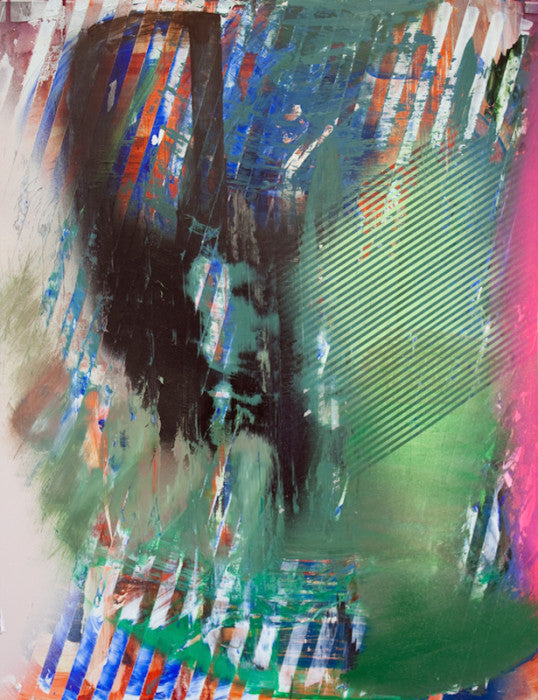 © JAMES SIENA, Untitled 2009
© JAMES SIENA, Untitled 200919-1/4" x 15-1/8"
Courtesy PaceWildenstein, New York[/caption] Lately though, there has been a shift. I noticed it first in the younger artists studios and then in the work of well known contemporary artists like James Siena. Instead of making epically scaled paintings, these artists are making work that is smaller, painterly, intimate and inviting. It was through my interest in James Siena's painting that I discovered the work of Ben Pritchard, a Brooklyn based artist creating small, heavily labored drawings and paintings. Siena included Pritchard in two exhibitions that he curated, first at the Atlantic Center for the Arts in 2009 and again at DC Moore Gallery in New York City in 2010. The surfaces of Pritchard's paintings are quite heavy and evidence layers of under painting. Gone is the grand format and familiar clean canvas edge. Instead, Pritchard's paintings are human scale and sit on awkwardly shaped surfaces where the forms appear to wrestle with the uneven edges. The intense workmanship and elegant simplicity of the final image combine to make Pritchard's work both charming and compelling. Ben's drawings are also intimate labors of love. Although in his drawing there is no layering or masking of the work involved. The detail sits on the surface and the finished image is an intricate concoction of marks that conform to a set of rules established by the artist at the outset of the drawing. All this work is squeezed onto a piece of paper not much larger than your average A3 sheet. Again the forms appear to wrestle within the asymmetrical edges of the paper to create intriguing, dynamic compositions. Pritchard's work represents a beautiful shift towards intimacy. He has stepped away from the massive, bold 'look at me paintings' of the past while skillfully preserving that certain something in painting that compels the viewer to take notice - only this time, it is not from a distance. To view more of Ben's work, visit his website or his TWFineArt print portfolio. [caption id="attachment_8138" align="aligncenter" width="494"]
 Oscar Fate, Ben Pritchard 2009-14, Oil on canvas, 24/28"[/caption]
[caption id="attachment_8135" align="aligncenter" width="542"]
Oscar Fate, Ben Pritchard 2009-14, Oil on canvas, 24/28"[/caption]
[caption id="attachment_8135" align="aligncenter" width="542"] Title Unknown, Ben Pritchard[/caption]
[caption id="attachment_8093" align="aligncenter" width="405"]
Title Unknown, Ben Pritchard[/caption]
[caption id="attachment_8093" align="aligncenter" width="405"] Santa Theresa, Ben Pritchard Ink on Paper, 2011,48/65cm[/caption]
[caption id="attachment_8094" align="aligncenter" width="429"]
Santa Theresa, Ben Pritchard Ink on Paper, 2011,48/65cm[/caption]
[caption id="attachment_8094" align="aligncenter" width="429"] Potatoe (Rhizome) Ben Pritchard Ink on paper, 25.5/19.5, 2012[/caption]
Potatoe (Rhizome) Ben Pritchard Ink on paper, 25.5/19.5, 2012[/caption]






